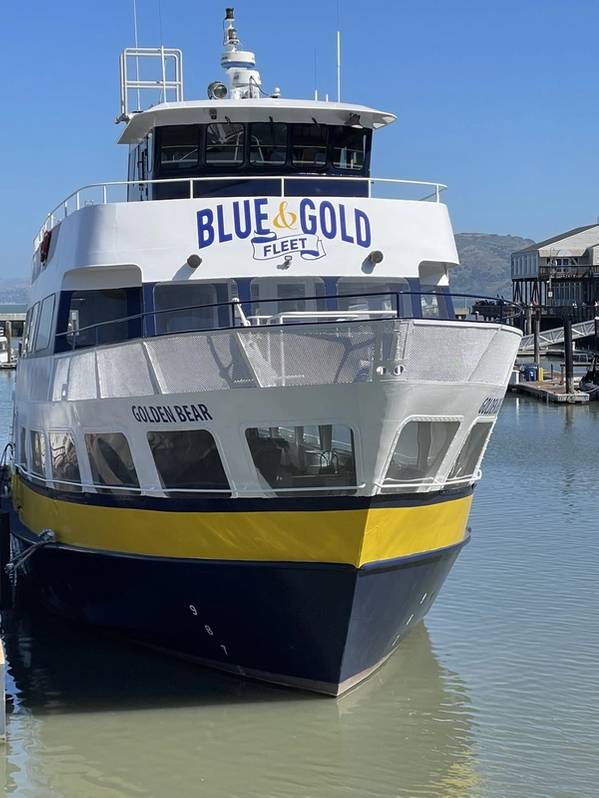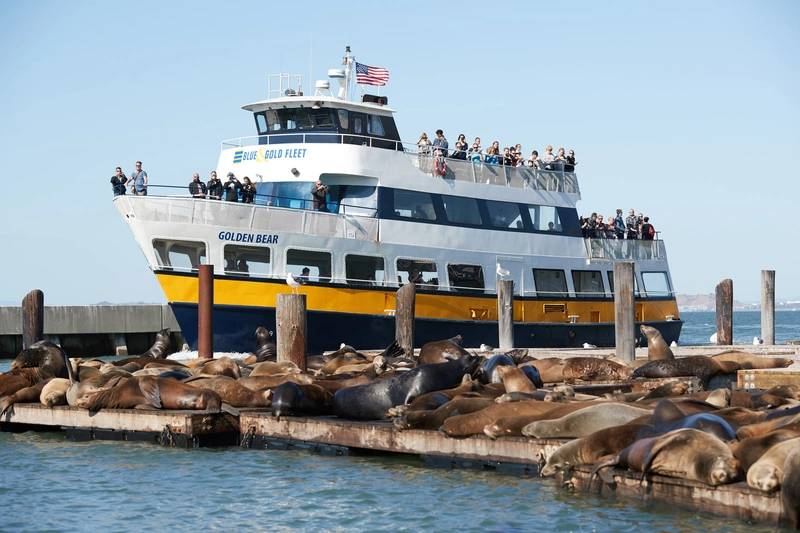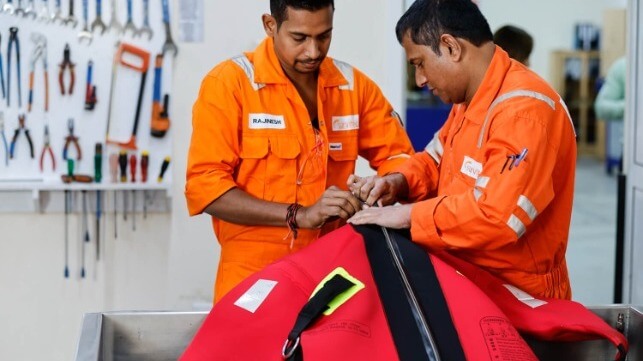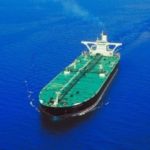Patrick Murphy, PVA President And President,
Patrick Murphy has been President of Blue & Gold Fleet, L.P., the San Francisco Bay Area’s largest and premier provider of Bay Cruises and ferry service, since 2016. Murphy grew up in the Maritime business. His father, Roger Murphy, founded Blue & Gold Fleet in 1979. Patrick Murphy began his career in 1982, working part-time in the Box Office and as a Deckhand before receiving his United States Coast Guard’s license in 1995 and was promoted to Captain in 1996. In 2005, Murphy advanced to Blue & Gold Fleet Operations Manager, and then to Director of Operations in 2009. Today, Murphy oversees an operation which has a fleet of twenty-two (24) inspected vessels, which accommodate from 225 to 787 passengers. Murphy holds a Business Administration degree from Southern New Hampshire University. Long involved with Passenger Vessel Association leadership duties, today he serves as PVA President. Listen in this month as he outlines the vision of PVA, its goals and the challenges facing the domestic passenger vessel and ferry industry today:
As we launch into the New Year, what would you say is the top priority for PVA and its membership?
The Passenger Vessel Association (PVA) represents a diverse gathering of passenger vessel operators as well as suppliers and vendors to the passenger vessel industry. Our vessel members operate Coast Guard certificated passenger vessels in every corner of the United States, in nearly every waterfront community, and aboard vessels of every shape and size imaginable. PVA members operate small overnight cruise vessels in picturesque Alaskan destinations and up and down the Mississippi River. There are large ferry vessels carrying hundreds of passengers in large urban environments to small ferries in rural communities. PVA ferries, such as mine, carry busy commuters to and from work and shuttle sightseers to breathtaking park and nature sites. PVA member operators also offer scenic dinner cruises aboard historic paddlewheel vessels on the Nation’s inland rivers and they offer a variety exciting environmental cruises on our coastal waters. Annually, PVA members carry approximately 200 million passengers aboard their vessels. As such, PVA’s top priority, and that of its members, is safety. Safety is at the core of what we as an association stand for. Safety guides our thinking, our actions, and everything we do.
Along with this steadfast commitment to safety, PVA will continue in 2025 and beyond to aggressively represent our members’ interests in Washington D.C. The goal of our advocacy program remains focused on fostering a positive business atmosphere for our members while working to reduce regulatory burden on their businesses. In the coming months, our association will also focus energy and expertise on working with a new administration and a new Congress to ensure that our Industry’s voice is heard and the issues that matter most to PVA members are communicated clearly. The following are a just a few of the issues that we will be emphasizing:
- Capitol Construction Fund (CCF)
The CCF was expanded, through the work of PVA and key Members of Congress to include U.S. flag passenger vessel operators. The program allows private vessel operators to deposit income from their business operation into a tax deferred CCF account. PVA will continue to underscore the importance of this program, and preserve it, as many PVA members have participated as a result of this landmark expansion.
- Continued Funding for Coast Guard Programs
PVA members rely on a strong Coast Guard for a variety of important services including annual inspections, plan revue, and mariner licensing. PVA will continue to persuasively advocate for needed funding for core Coast Guard missions that are critical to the passenger vessel industry.
- Illegal Charter Enforcement
Illegal charters are a growing threat in the Nation’s ports, yet the public, and many in Congress, remain unaware of the significant safety threat that these illegal charter operators pose. Uninspected vessels and unlicensed crew operate vessels on charters and involve unsuspecting passengers in potentially unsafe situations. PVA is committed to alerting Congress to this ever-present threat and to urge that the Coast Guard be provided with the resources necessary to take steps to enforce current federal law to shut down these illegal operators.
- Shipyard Grant Program Funding
PVA will continue to urge that Congress provide adequate funding for The Small Shipyard Grant Program. The program allows U.S. facilities to make capital improvements and modernize practices that help to make them more competitive in the global market. The grants are also used support employee training programs. Many PVA member shipyards have received grants in the past.
 Image courtesy PVAWhat is the biggest challenge facing PVA members?
Image courtesy PVAWhat is the biggest challenge facing PVA members?
While 2024 has been a banner year for the majority of PVA members from a business standpoint, there are reports from many members that they are struggling to find qualified licensed mariners. Some of our member companies are looking to our Nation’s maritime academies as a possible solution to the problem. PVA has been working with various maritime academies for several years now in anticipation of this need. The Massachusetts Maritime Academy, for example, regularly attends the PVA annual convention to help forge relationships with PVA members to promote employment opportunities for its cadets. Various maritime institutions, such as Mass Maritime, have cadets who do not wish to go to sea upon graduation and look to employers such as those in the passenger vessel industry after graduation.
How about for you and the Blue & Gold fleet locally? Are your issues and PVA’s typically one in the same? Why or why not?
Blue & Gold Fleet is quite active on state and local issues that affect our core business. At the same time, we rely heavily upon PVA when it comes to advocacy work at the Federal level. From time to time, the lines between state and federal jurisdictions become blurred and we find ourselves working together on issues of local importance. Such has been the case for the emerging emissions rules from the California Air Resources Board (CARB) that affect PVA member vessel operators. PVA is very concerned about the California Air Resources Board’s most recent amendments to the existing Commercial Vessel Air Emissions Harbor Craft rule. We feel that the implementation schedule imposed by CARB is not realistic for California passenger vessel operators, and some of the required technology that isn’t commercially yet. In addition, some engine manufactures are pulling out of the market because they do not want to do research and development on what is only a California rule.
So far, the U.S. Environmental Agency (EPA) has not acted upon the state’s request for a Clean Air Act waiver. Without EPA’s approval, California cannot enforce the proposed amendments. It is not clear if the outgoing Biden EPA will grant the approval. If not, President-elect Trump will likely not support California’s request to approve the EPA waiver.
Tell us a little about the Blue & Gold fleet – numbers, routes, locale, etc.
Blue & Gold Fleet has operated in San Fransisco since 1979 when it launched its first bay cruise aboard the MV Oski. Since then, the company has grown to a fleet of 24 vessels, with three vessels currently being constructed. The company provides regular ferry service to Sausalito and through its contract with the San Francisco Bay Ferry provides service to Alameda Harbor Bay, Main Street Alameda, Oakland, Richmond, Seaplane Lagoon, South San Francisco, Vallejo, and Oracle Park. Blue & Gold Fleet is accepted into the Coast Guard’s Streamlined Inspection Program and is ISO 9001 and 14001 Certified. The company is projected to carry 3.2 million passengers in 2024.
 Image courtesy PVA
Image courtesy PVA
Regulatory issues are always top of mind for any vessel operator. What’s new from the U.S. Coast Guard (if anything); what is PVA as an advocacy group doing to respond, and what concerns PVA stakeholders the most?
In May, PVA provided comments to the Coast Guard’s Notice of Proposed Rulemaking on Cybersecurity in the Marine Transportation System. The proposed regulation intends to establish broad cybersecurity requirements for U.S. flagged vessels and U.S. facilities subject to the Maritime Transportation Security Act of 2002 regulations. It is intended to address cybersecurity threats which are deemed to be increasing in the marine transportation system. In responding to this proposed regulation, PVA pointed out to the Coast Guard that the PVA Alternate Security Program (ASP) already includes cybersecurity assessment and mitigation guidance suggesting that any additional steps would be redundant. PVA stated further that the PVA ASP “framework has proved to be effective in allowing owners and operators to determine the best way to implement security requirements across the passenger vessel fleet.”
Our concern about this proposed rule is not that cyber security is not a valid activity, but rather it is a matter of scale. The degree of response should be directly related to company size and directly proportional to the results of an assessment. A small passenger vessel operator should have the flexibility to respond and plan based on their level of cyber exposure. We believe that the PVA ASP provides adequate and effective cyber security coverage for covered vessels and facilities.
PVA’s Flagship Safety Management Program has been around a long time. List some long-term benefits of this program, and what members have improved as they employ the tool.
PVA’s commitment to safety goes back to its roots as an organization and is institutionalized in the work of the PVA Safety and Security Committee, which has tapped into the extensive knowledge and expertise of its members to develop a variety of powerful training tools for PVA members to use in their company risk management programs. As these member resources have evolved, so too have the demands of PVA members for more sophisticated tools in which to enhance their safety practices. The Flagship Safety Management System (SMS) grew out of this demand and that of Congress and the Coast Guard for additional ways to improve safety aboard U.S. passenger vessels. As a result, a Coast Guard/PVA Quality Partnership working group was formed and tasked to create a voluntary alternative safety management system for the domestic passenger vessel industry.
Implementing a safety management system such as Flagship offers PVA members numerous benefits. First, it enhances employee safety by identifying and mitigating risks, which reduces workplace accidents and injuries. This leads to a healthier, more productive workforce.
Next, it ensures compliance with existing Coast Guard safety regulations. It will also help improve operational efficiency by streamlining safety procedures, reducing downtime caused by accidents. Additionally, implementing a Flagship SMS will help foster a positive company culture, and boost employee morale and engagement. Most importantly, implementing a Flagship SMS will improve a company’s overall risk management program by providing a structured approach to identifying, assessing, and controlling vulnerabilities. Ultimately, it supports long-term sustainability by reducing financial losses from accidents and insurance premiums, leading to cost savings.
 Image courtesy PVA
Image courtesy PVA
Your primary regulatory partner is the U.S. Coast Guard. What would PVA like to see changed or improved within the Coast Guard’s domain in the coming year?
PVA has a professional relationship with the Coast Guard which is approaching a 60-year lifespan. There is generally a sense of mutual respect which enhances our interactions and our appreciation for each other’s missions is a direct result of this long-term connection. But the key to maintaining positive relations constant communications. At PVA, we have been advocating, whenever possible, for more Coast Guard Industry Days. We recognize that it is difficult for the Coast Guard to sponsor these events. This is why PVA, and PVA members, regularly offer to step in and host Industry Day meetings locally to foster an open dialogue between industry and the Coast Giard so that we can address pressing issues. In addition, many PVA members who are located in Coast Guard training ports have offered their vessels as training platforms during non-inspection times to assist the Coast Guard in training inspectors. We see this activity as being mutually beneficial.
The environment is important, no matter what sector of the marine industry and collective waterfront you operate in. Domestic passenger vessels know this only too well, especially with such a public-facing task of carrying hundreds of thousands of passengers monthly. That said; the PVA Green Waters program is a voluntary tool in the PVA toolbox. Have you used it to “green up” your carbon signature, and if so, how? What can all PVA members do to become better stewards of our environment?
PVA’s Green Waters Program is designed to promote environmental sustainability within the U.S. passenger vessel industry. The program, which was launched in 2012 on Earth Day, encourages vessel operators to adopt eco-friendly practices that reduce their environmental impact, focusing on cleaner operations, waste reduction, and energy efficiency. The program provides resources and guidelines to help companies employ best practices in pollution prevention, waste management, and energy conservation.
Through the Green Waters Program, PVA members gain access to industry-specific tools, share knowledge, and collaborate on innovative solutions to environmental challenges. The initiative also emphasizes the importance of reducing greenhouse gas emissions and improving fuel efficiency, aligning the passenger vessel industry with broader global sustainability goals. By joining the program, members demonstrate their commitment to protecting marine ecosystems while fostering a culture of environmental stewardship across the industry. Currently, there are nearly 500 PVA member vessels participating in the Green Waters program and the list continues to grow.
PVA has touted its PVA/USCG quality partnerships in the past. Describe these partnerships, what they focus on, and how they add value for PVA stakeholders.
The PVA/Coast Guard Quality Partnership Meeting is a long-standing forum where senior PVA and Coast Guard leaders meet twice a year to discuss issues of mutual concern in a non-regulatory environment. Chartered in 1996, the partnership is actually quite revolutionary in that it provides an important channel through which the leaders of our two organizations can communicate and work to explore and resolve issues before they become major problems. It establishes a forum that promotes frank and open discussions and that ensures that all parties are fully aware of the facts prior to any independent decision-making.
In recent years, numerous working groups, comprised of industry and Coast Guard experts, have been formed to work on specific problems. These working groups have produced excellent work products, guidelines, and tools that have been used to address a variety of non-regulatory needs. Some of the working group projects have included new fire load calculations, hull plate assessment tools, fire safety standards, and guidelines for reducing slips, trips, and falls.
Much work has been done over the years in combating illegal charters and both PVA and the Coast Guard can take credit for a great deal of forward progress in this area. However, there is still a great deal of work still to be done. This issue is still squarely on the Coast Guard’s radar as major public safety issue thanks to PVA’s vigilance in communicating the dangers associated with this growing trend and the Coast Guard’s willingness to allocate resources to study and address the problem.
Illegal charter operators prey on the general public by advertising “boat charters” and “sightseeing trips” via online boat sharing websites and at marinas. The unsuspecting public falsely believes that an operator is legitimate, and qualified. Federal law authorizes civil fines for violations of commercial passenger vessel safety laws. The Coast Guard can order an operator to cease illegal operations by issuing a Captain of the Port Order. Violation of such an order is a criminal offense.
Several years ago, a Coast Guard officer interned with PVA to study the issue of illegal charters. He travelled to several ports and visited with PVA members to learn first-hand about the extent of the problem. He reported his findings to the Coast Guard. As a result, illegal charters and enforcement has been elevated in the Coast Guard’s workload and is a regular agenda item during the PVA/Coast Quality Partnership Meeting.
Progress is being made as Coast Guard enforcement is up and prosecutions are increasing as evidenced by the conviction in New York this year of the owner and operator of an illegal charter boat, who was convicted in the deaths of two passengers.
Let’s talk about ferries and passenger vessel growth. Nationwide, how’s it going? Is passenger count up? Are fleet renewals and replacements keeping pace with the fleet(s) needs?
While estimates for ferry passenger counts are highly dependent upon local market conditions, it is safe to say that overall ferry ridership numbers are up for 2024, and large cities such as Seattle, New York and San Francisco have seen steady, if not dramatic increases in ferry ridership over the last several years. With the advent of virtual work and more flexible work schedules, we have also seen a need to modify ferry schedules to accommodate different ridership patterns. We will see increasing ferry ridership in 2025 and in following years and this is reflected in current and planned new builds and retrofits that we are witnessing in the Nation’s ferry systems.
Ferry fleets nationwide, both public and private, are building new vessels to meet expanding or projected ridership demands. Federal dollars play a big part in some of these projects. As an example, New York City recently received a $10 million FTA grant to support operations of a new electric hybrid ferry serving Governors Island. In addition, the Port of San Francisco and the San Francisco Bay Ferry received a $55 million EPA Clean Ports Program Grant that will be used to construct a high speed 400 passenger zero emission vessel, to build a new ferry terminal in San Francisco’s Mission Bay, and establish a maritime workforce development program.
Washington State’s widely reported ferry expansion plan earmarks $3.98 billion to build a series of new hybrid electric ferries while also converting existing diesel-powered ferries to hybrid electric power. The program also includes shore power charging stations.
Physical Security for your many stakeholder’s boats is a top priority. Where does PVA help in this regard? What constitutes the biggest risk in this area today, and what are you doing about it?
Security aboard U.S. flagged passenger vessels has always been a priority for our industry. This precedence is closely aligned with our attention to safety and it is ingrained in the fabric of who we are as an industry. Operating passenger vessels safely has always included a level of vessel security as we must know who is aboard our vessels at all times. But 9/11 and the Congressional passage of The Maritime Transportation Security Act of 2002 (MTSA) completely changed the game in that it required a greater level of security than had ever been experienced before. It required vessels and facilities to conduct assessments and develop security plans.
In response, PVA created the PVA Alternative Security Program (ASP) which provided, and still provides, an extremely effective option for PVA members to effectively implement security aboard PVA vessels and member facilities. Since then, hundreds of passenger vessels have been required to have a federal security plan and a majority of those vessels are successfully using the PVA ASP which is now in its 5th revision. The PVA ASP continues to provide a way for members to incorporate a risk-based security approach, which allows for more focused and effective security measures based on the specific threat environment of the vessel and its operations.




